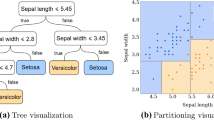Abstract.
When data sets are analyzed, statistical pattern recognition is often used to find the information hidden in the data. Another approach to information discovery is data mining. Data mining is concerned with finding previously undiscovered relationships in data sets. Rough set theory provides a theoretical basis from which to find these undiscovered relationships. We define a new theoretical concept, strong compressibility, and present the mathematical foundation for an efficient algorithm, the Expansion Algorithm, for generation of all reducts of an information system. The process of finding reducts has been proven to be NP-hard. Using the elimination method, problems of size 13 could be solved in reasonable times. Using our Expansion Algorithm, the size of problems that can be solved has grown to 40. Further, by using the strong compressibility property in the Expansion Algorithm, additional savings of up to 50% can be achieved. This paper presents this algorithm and the simulation results obtained from randomly generated information systems.
Similar content being viewed by others
Author information
Authors and Affiliations
Additional information
Received 6 May 1999 / Revised 3 December 1999 / Accepted in revised form 17 January 2000
Rights and permissions
About this article
Cite this article
Starzyk, J., Nelson, D. & Sturtz, K. A Mathematical Foundation for Improved Reduct Generation in Information Systems. Knowledge and Information Systems 2, 131–146 (2000). https://doi.org/10.1007/s101150050007
Issue Date:
DOI: https://doi.org/10.1007/s101150050007




